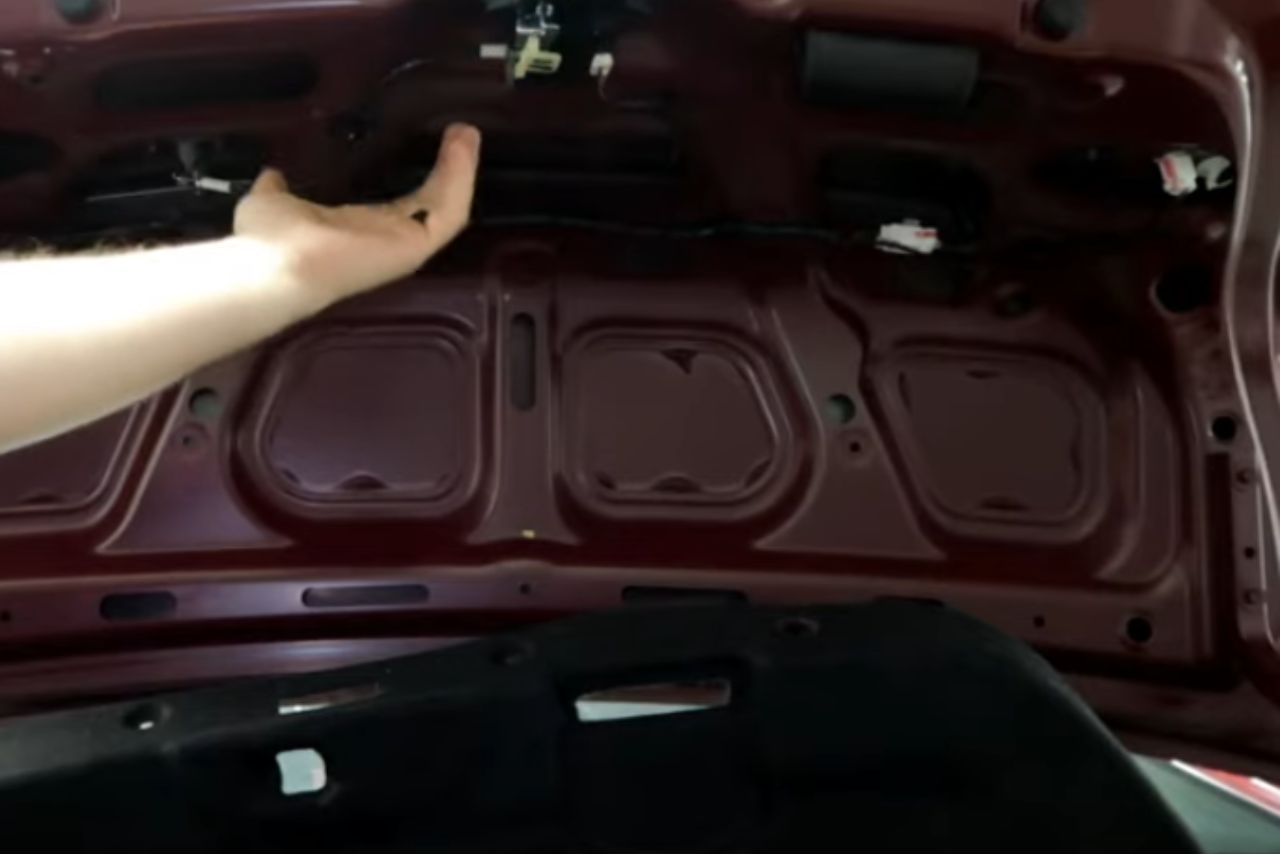If you’re a Honda Civic owner, you know how reliable and long-lasting these vehicles can be.
However, even the most dependable cars can experience some issues from time to time.
One frustrating problem that Civic drivers may encounter is a Honda Civic Trunk Won’t Close / Shut properly. It can be a real pain to deal with, especially if you have valuables in the trunk that you need to keep secure.
But fear not, there are several possible reasons why your trunk isn’t closing correctly, and we’ve got seven solutions to help you fix the issue.
A Honda Civic trunk may not close or shut properly due to a few common reasons. Firstly, there may be an obstruction such as objects or debris blocking the latch. Secondly, the trunk latch itself might be misaligned, preventing it from engaging with the striker plate correctly.
Lastly, if the trunk has experienced impact or force, it’s possible that the latch mechanism or related components are damaged and need repair or replacement.
Table of contents
Honda Civic Trunk Won’t Close / Shut Reasons & Their Solutions:
| Problem | Symptoms | Possible Causes | Solutions |
|---|---|---|---|
| Latch not engaging | Trunk won’t close or pops open | Latch is damaged, misaligned, or not properly adjusted | Adjust or replace latch, check alignment |
| Trunk release cable not working | Trunk won’t close or pops open | Cable is damaged, disconnected, or not properly adjusted | Adjust or replace cable, check connection |
| Trunk striker not engaging | Trunk won’t close or pops open | Striker is damaged, misaligned, or not properly adjusted | Adjust or replace striker, check alignment |
| Trunk lock not working | Trunk won’t close or pops open | Lock is damaged, misaligned, or not properly adjusted | Adjust or replace lock, check alignment |
| Trunk hinges or latches corroded | Trunk won’t close or pops open | Hinges or latches are corroded or damaged | Clean and lubricate hinges or latches, replace if necessary |
| Trunk is overloaded | Trunk won’t close or pops open | Trunk is overloaded and the weight is preventing the latch from engaging | Reduce the weight in the trunk |
| Trunk is not properly closed | Trunk won’t close or pops open | Trunk is not properly closed, causing the latch to not engage | Close the trunk properly |
1. Check the Trunk Latch:

You’ll want to check the trunk latch by pulling on it to see if it’s loose or stuck, making it difficult to close the trunk properly.
If the latch is loose, you may be able to tighten it by adjusting the latch tension. This can be done by using a screwdriver to adjust the tension on the latch mechanism until it feels tight and secure.
If the latch is stuck, you may need to lubricate the latch mechanism to help it move more freely.
Use a silicone-based lubricant, spray it on the latch mechanism, and then move the latch back and forth a few times to distribute the lubricant evenly.
This should help the latch move more freely and make it easier to close the trunk.
By checking the trunk latch and adjusting the tension or lubricating the mechanism, you can often fix the problem and get your trunk to close properly once again.
2. Inspect the Trunk Alignment:

Take a look at how the trunk lines up to see if it’s causing the problem. The trunk alignment can affect the latch’s ability to properly close.
Sometimes, the hinges need adjusting or lubricating, which can help the trunk align better. If the trunk isn’t lined up correctly, it can create a gap that prevents the latch from engaging properly.
To inspect the trunk alignment, close the trunk and look at the gap between the trunk and the body of the car. If the gap on one side is bigger than the other, it could indicate that the hinges are not aligned properly.
To adjust the hinges, loosen the bolts that hold them in place and move them until they align correctly. If the hinges are rusted or damaged, they may need to be replaced.
Additionally, lubricate the latch to ensure it moves smoothly and doesn’t get stuck. With these adjustments, the trunk should align correctly and the latch should close properly.
3. Test the Release Mechanism:
As you give the release mechanism a test, make sure it’s not sticking or jamming, like a rusty old gate that needs some oil to swing freely. If the mechanism is not functioning properly, it could be due to a few reasons.
One common issue is that the latch tension may be out of adjustment, causing the latch to not engage properly.
To fix this, you can adjust the tension on the latch by loosening or tightening the bolts that hold it in place. Refer to the table below for a quick summary of how to adjust the latch tension.
| Problem | Solution |
|---|---|
| Latch tension is too loose | Tighten the bolts that hold the latch in place |
| Latch tension is too tight | Loosen the bolts that hold the latch in place |
Another reason why the release mechanism may not be working is that the latch mechanism may be dry and in need of lubrication. If this is the case, you can lubricate the latch mechanism with a silicone-based spray or oil.
Be sure to avoid using regular oil or grease as it can attract dust and debris, which can cause more problems in the long run.
Once you have lubricated the latch mechanism, try closing the trunk again and see if it latches properly. If it still doesn’t work, you may need to take it to a mechanic to further diagnose the issue.
4. Evaluate the Trunk Striker:
Now it’s time to check out the trunk striker and make sure it’s not damaged or misaligned, so you can hit the road with peace of mind.
The striker is the metal piece on the body of the car that the latch on the trunk lid connects to when it’s closed. If the striker is bent or positioned incorrectly, it can prevent the trunk from fully shutting.
To evaluate the trunk striker, start by examining it for any visible damage or signs of wear. If it’s bent or dented, it may need to be replaced.
If the striker looks okay, you may need to adjust its position. First, loosen the bolts that hold the striker in place, and then move it up or down or left or right until it lines up with the latch on the trunk lid.
Once you’ve repositioned it, tighten the bolts and check to see if the trunk closes properly.
If it still doesn’t, try lubricating the striker mechanism with some silicone spray. This can help the latch slide more easily into place, allowing the trunk to shut properly.
5. Look for Obstructions:
You might be surprised to learn that 60% of trunk closure issues are caused by obstructions in the latch or striker mechanism.
So, before you start worrying about the cost of taking your Honda Civic to a mechanic, take a few minutes to inspect the trunk for any obstructions.
Here are some steps you can take to clear any blockages:
- Check for any items that might be obstructing the latch or striker mechanism. This could be anything from a piece of paper to a small object that’s fallen into the latch mechanism. Remove any items that you find.
- Use a soft-bristled brush to remove any debris or dirt that may be obstructing the latch or striker mechanism. Be gentle when brushing, and avoid using water or other liquids that could cause damage to the mechanism.
- Apply a small amount of lubricant to the latch and striker mechanism to help it move more smoothly. Use a lubricant that’s specifically designed for use on automotive parts, and follow the manufacturer’s instructions for application.
Lubrication techniques can help to prevent future blockages and ensure that your trunk closes smoothly every time.
6. Check the Trunk Seal:
Don’t forget to check the trunk seal for any cracks or tears that could be causing leaks and potentially damaging your belongings during transport.
Inspect the weather stripping around the trunk area and make sure it is clean and free of debris.
If you notice any cracks or tears, it may be time to replace the seal to ensure a tight, secure fit when closing the trunk. Additionally, lubricating the hinges may also help with closing the trunk properly.
Over time, the hinges can become stiff or corroded, making it difficult to close the trunk.
Apply a small amount of lubricant to the hinges to make them move more smoothly and prevent any further damage.
By taking these simple steps, you can ensure your trunk closes properly and keep your belongings safe during transport.
7. Consider the Key Fob Battery:
If you’re experiencing trouble with your key fob, it might be worth checking the battery to see if that’s the issue.
A weak or dead battery can cause the keyless entry system to malfunction, which could be why your Honda Civic trunk won’t close.
Replacing the key fob battery is a relatively easy and inexpensive fix that you can do yourself. Here are some tips for troubleshooting your keyless entry system and replacing the key fob battery:
- First, try standing closer to your car and pressing the button again. Sometimes the range of the keyless entry system can be affected by obstacles or interference.
- If that doesn’t work, try using the spare key fob to see if the problem is with the key fob itself or the car’s system.
- If neither key fob works, it could be an issue with the car’s receiver or a problem with the wiring.
To replace the key fob battery, check your owner’s manual for instructions on how to open the fob and what type of battery to use. Most key fobs use a small watch battery that can be found at most electronics or hardware stores.
8. Try Resetting the Trunk System:
To reset the trunk system, simply locate the fuse box and remove the fuse labeled for the trunk, wait a few seconds, and then replace it.
This is a common troubleshooting tip for Honda Civic owners who are experiencing trunk system malfunctions. Resetting the system can help solve issues such as the trunk not closing or opening properly, or the trunk latch not engaging.
The trunk system malfunction can be caused by a variety of factors, including a blown fuse, a faulty trunk latch, or a damaged wiring harness. By resetting the trunk system, you can rule out a blown fuse as the cause of the issue.
If resetting the system does not solve the problem, it’s recommended to take your Honda Civic to a certified mechanic for further inspection and repair.
Understanding the common causes of Honda Civic trunk issues and how to fix them can help you save time and money in the long run.
Seek Professional Assistance if Needed:
It’s always best to rely on certified mechanics when dealing with persistent trunk system malfunctions. If you’ve tried resetting the trunk system and the issue persists, then it’s time to seek professional assistance.
Trunk issues can be caused by a variety of reasons, some of which are more complicated than others.
Trying to fix the issue yourself can lead to further damage and potentially cost more in the long run.
Here are some common causes of trunk issues that may require professional help:
| Issue | Solution |
|---|---|
| Damaged or broken latch | Replacement of the latch |
| Misaligned trunk | Realignment of the trunk |
| Faulty electrical connections | Repair or replacement of the connections |
| Damaged or broken hinges | Replacement of the hinges |
If you’re experiencing any of these issues, it’s important to seek professional help. Attempting to fix the issue yourself could lead to further damage and potentially cost more in the long run.
By relying on certified mechanics, you’ll have the peace of mind knowing that your car is in good hands. Don’t hesitate to seek help if you’re struggling with a persistent trunk issue.
Frequently Asked Questions:
How do I replace the trunk latch on my Honda Civic?
To replace the trunk latch on your Honda Civic, start by troubleshooting trunk closure issues. Once you’ve identified the problem, remove the old latch and install the new one, making sure it’s securely in place.
Can a damaged trunk seal cause other problems with my car?
A damaged trunk seal can lead to water and dust infiltration, which can affect the interior and electronic components, such as the audio system. Regular maintenance of trunk seals is important to prevent such issues and maintain optimal vehicle performance.
What should I do if my key fob won’t unlock the trunk?
Are you having trouble with your key fob unlocking your trunk? Trunk latch troubleshooting can help overcome trunk lock issues. Check for any physical damage or low battery and try reprogramming the key fob.
Is it possible to adjust the trunk striker without professional help?
Yes, you can make DIY adjustments to the trunk striker without professional help. Common causes of a misaligned striker include wear and tear, loose bolts, or damage from a previous accident.
How do I know if my trunk release mechanism needs to be replaced?
To troubleshoot a trunk release, check if the mechanism is jammed, the release button is faulty, or the wiring is damaged. DIY trunk release repair involves replacing broken parts or cleaning dirty ones.
Conclusion and final thoughts 💭
In conclusion, if you’re struggling with a Honda Civic trunk that won’t close or shut, there are several potential issues to investigate. It’s important to start with the most common culprits, such as the trunk latch, alignment, and release mechanism.
From there, you can move on to evaluating the striker, checking for obstructions, and examining the trunk seal. If all else fails, you may need to consider resetting the trunk system or seeking professional assistance.
Interestingly, according to a recent survey, the Honda Civic is one of the most popular cars in the United States. It’s consistently ranked as one of the top-selling vehicles in the country, with over 300,000 units sold in 2020 alone.
With so many people relying on their Civics for daily transportation, it’s no wonder that issues like a malfunctioning trunk can be frustrating and inconvenient.
However, with a little troubleshooting and effort, it’s possible to get your trunk back in working order and get back on the road with confidence.
Latest Posts:
- Can WD-40 Remove Scratches on Cars? (Hint: Yes, but…)
- Can You Use a Drill to Polish Your Car? (We Tried it Out!)
- Should You Cover Car Scratches With Stickers? (REVEALED!)
- Buick Service Stabilitrak: (Causes & 100% Guaranteed Fix!)
- Common Holden Trax Problems (Causes & 100% Proven Fixes!)
- Jeep Commander Transmission Over Temp: (Guaranteed Fix!)












Leave a Reply